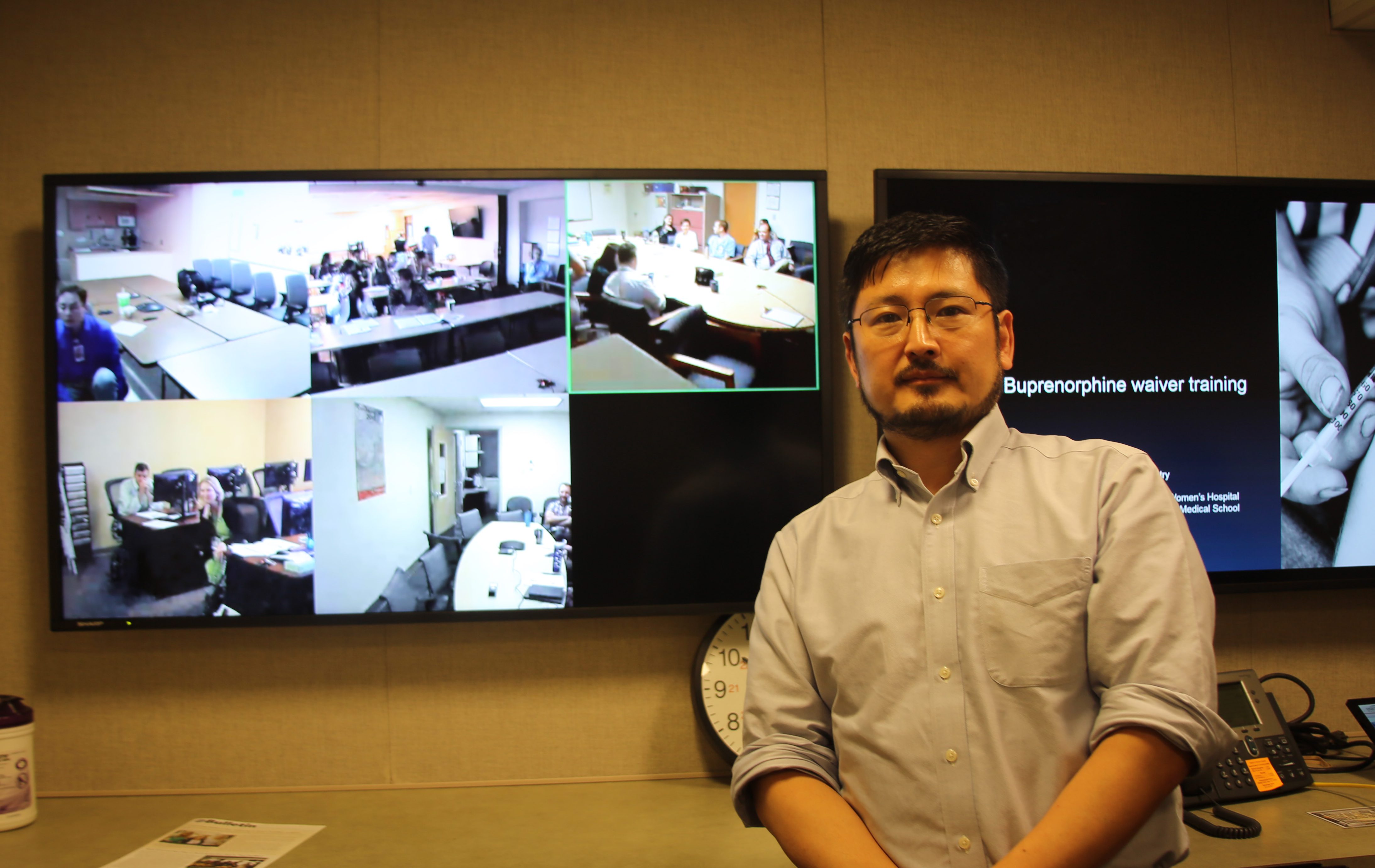Combating the Opioid Crisis with Lifesaving Training Opportunities

Buprenorphine is widely considered one the most effective medications available to treat opioid use disorder. It blocks the effects of opioids and suppresses cravings and withdrawal symptoms – “tricking” the brain into believing an opioid like heroin or oxycodone has been ingested without producing a drug-induced high.
But there’s one big catch: It can be difficult for patients to access, primarily because clinicians must undergo a specialized, eight-hour training to prescribe it to patients with opioid use disorder.
The time commitment alone is a significant barrier for many providers. Additionally, access to the buprenorphine waiver training course is limited in many areas of the country.
Mia Lozada, MD, an internal medicine physician at Gallup Indian Medical Center in Gallup, N.M., and her colleagues are all too familiar with these challenges. Serving residents of the Navajo Nation, the U.S. Indian Health Services (IHS) hospital is about a two-hour drive from the nearest city, Albuquerque, where waiver training is occasionally offered.
“In addition to the time and distance, we typically don’t hear that these trainings are available until a month or two ahead of time. By then, our clinics are already scheduled, so the logistics are even more complicated,” she said.
That’s why Lozada and her colleagues jumped at the chance to remotely attend an online waiver training last month led by Joji Suzuki, MD, director of BWH’s Division of Addiction Psychiatry, organized in collaboration with the Brigham and Women’s Outreach Program. The course was scheduled several months in advance, enabling 38 Navajo-area IHS clinicians from multiple disciplines across five sites to attend without affecting patient care.
Since 2009, BWHers have collaborated with the IHS – the U.S. government agency responsible for delivering medical and public health services to members of federally recognized Native American tribes. Through the Outreach Program, BWH faculty, nurses, trainees and other providers volunteer their time and expertise to offer specialized care and training on the ground at IHS hospitals in rural New Mexico and Arizona and through remote teaching opportunities.
Providing waiver training remotely and offering it to IHS clinicians were firsts for Suzuki, who has led waiver training courses for prescribers across the Brigham, Greater Boston and New England for more than 10 years.
“The clinicians out there in Navajo Nation are doing amazing work with such limited resources, and I’m happy to do anything I can to help them,” Suzuki said. “Since we already had this relationship established through the Outreach Program and the technology to provide the training remotely, it was a great opportunity to lower some of the barriers they face in accessing waiver training.”

Joji Suzuki provides buprenorphine waiver training to Indian Health Services clinicians based in New Mexico.
A Valuable Resource
Many patients with substance use disorder are reluctant to seek care from an addiction medicine specialist due to social stigma. They may be more open to discussing treatment options with a clinician with whom they have an existing relationship, such as a primary care provider or gynecologist, underscoring the importance of expanded waiver training.
But because those providers typically haven’t received more specialized training in treating substance use disorders, they often report not feeling confident prescribing medications such as buprenorphine. Lozada, who completed the waiver training in 2011 during her residency at the University of California, San Francisco, was thrilled to have an opportunity to retake the course with Suzuki for this exact reason.
“The training reviewed a lot of areas in which we sometimes feel a little uncertain and would otherwise push some of us away from prescribing buprenorphine,” she said. “Hearing from an expert such as Dr. Suzuki was really valuable and reassuring. It gave me a lot more confidence in how to care for patients with opioid use disorder.”
Lozada noted that not only did the recent training help IHS clinicians increase their roster of buprenorphine prescribers, but it also expanded the range of specialties where patients can now access the medication. In addition to internal medicine practitioners, Navajo-area IHS clinicians representing inpatient care, obstetrics/gynecology, pediatrics and pharmacy services attended, as well.
“Having that diversity in expertise is important because it gives us the opportunity to provide this treatment to more patients, regardless of age or condition,” Lozada said. “It’s also a chance to cross-collaborate between our departments in a way we haven’t been able to do before.”
Another benefit is that having so many colleagues take the same training together will result in more consistent practice across multiple sites and disciplines, Lozada added.
“It puts us all on the same page,” she said. “Rather than attending different waiver trainings across the country, we all have a common foundation as we prescribe medications to treat opioid use disorder.”
While the number of clinicians receiving waiver training across the country is increasing, Suzuki noted it is one piece of a far bigger, more complex puzzle in responding to the opioid crisis.
“There’s a huge educational gap that’s going to take an entire generation to close,” he said. “You have several generations of physicians and health care providers who never received any substantial training around addiction treatment. One eight-hour course is not going to solve that problem. But it’s part of the solution.”

One Response to “Combating the Opioid Crisis with Lifesaving Training Opportunities”
This article gives me hope that we are going forward as a society in helping people who are caught in the opioid epidemic.